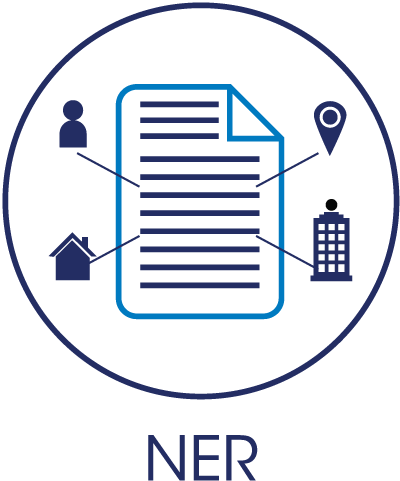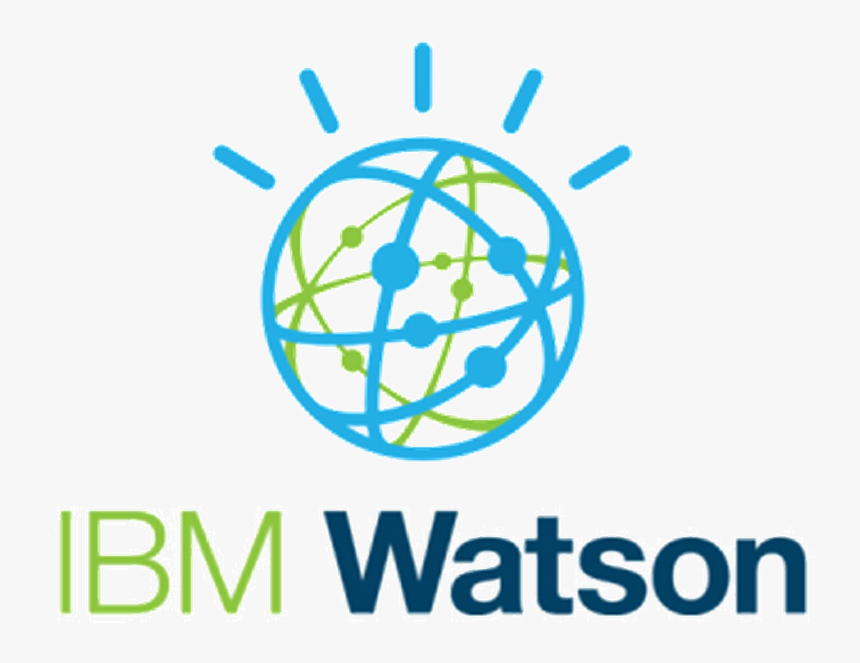Research
Gathering requirements from clients and users
Table of Contents
Technology Reviews
Research Summary: Named Entity Recognition (NER) - Application, Functionality, and Relevance to Gesture and Voice-Controlled Gaming Interfaces

Introduction
Named Entity Recognition (NER) is a subfield of natural language processing (NLP) that involves the identification of specific entities within text, such as names of people, organizations, locations, expressions of times, quantities, monetary values, percentages, etc. It's a crucial step in the text analysis process, enabling the transformation of unstructured text into structured data, which can then be further analyzed, categorized, or used to feed other NLP processes. This research summary explores the use, functionality, and application of NER in developing innovative gesture and voice-controlled gaming interfaces.
How NER Works
NER systems typically employ machine learning (ML) algorithms or deep learning models to recognize entities. The process involves several steps:
- Tokenization: Splitting the text into sentences, phrases, or words (tokens) to simplify analysis.
- Part-of-Speech Tagging: Assigning labels to each token (such as noun, verb, adjective) to understand their role in sentences.
- Entity Detection: Identifying tokens or groups of tokens that represent predefined categories (entities).
- Contextual Analysis: Understanding the context in which tokens appear to accurately classify ambiguous entities.
Recent advancements use more sophisticated models, such as Bidirectional Encoder Representations from Transformers (BERT) and other transformer-based models, which leverage vast amounts of data and context to improve accuracy.
Use and Application in Interactive Systems
In interactive systems, NER can enhance understanding and interaction by recognizing specific commands or inputs related to real-world entities. For example, in customer service chatbots, NER helps in identifying product names, locations, or issues from user inputs, allowing for more accurate and relevant responses.
Relevance to Gesture and Voice-Controlled Gaming Interfaces
- Command Interpretation: It enables the precise identification of game titles, control commands, and specific actions from user speech, translating them into actionable inputs for the game.
- Customization: By recognizing specific entities such as body parts or gestures mentioned by the user, NER allows for the customization of controls according to user preferences, enhancing the gaming experience.
- Dynamic Interaction: NER's ability to accurately process and understand spoken or gestured commands in real-time makes it possible to create more dynamic and responsive gaming environments. Players can interact with the game in natural, intuitive ways, significantly bridging the gap between human intentions and digital responses.
- Error Reduction: Through accurate entity recognition, the system can minimize misunderstandings or misinterpretations of user commands, leading to a smoother, more engaging gaming experience.
Conclusion
Named Entity Recognition represents a cornerstone technology in the development of advanced, user-friendly interactive systems, including gesture and voice-controlled gaming interfaces. By enabling precise, real-time interpretation of user inputs, NER facilitates a seamless integration of natural human behaviors into the digital gaming world, opening up new avenues for innovation and interaction design. For the described project, incorporating NER not only enhances the system's usability and responsiveness but also significantly elevates the overall user experience, making complex game interactions more accessible and enjoyable.
In the field of natural language processing (NLP), Named Entity Recognition (NER) is a crucial task, and several Python libraries have been developed to support this function.
Below, I'll outline some prominent libraries, discussing their advantages, disadvantages, and common use cases.
- spaCy
- Advantages: High speed and efficiency, suitable for large-scale NLP tasks. Provides pre-trained models for multiple languages. Easy integration with deep learning frameworks like TensorFlow and PyTorch. Offers a wide range of NLP features beyond NER, such as dependency parsing, part-of-speech tagging, and more.
- Disadvantages: Pre-trained models may not perform as well on very domain-specific data without further training. Less customizable in comparison to some more flexible machine learning libraries.
- Common Use Cases: General-purpose NER tasks across various domains. Building NLP pipelines for text preprocessing, annotation, and feature extraction.
- NLTK (Natural Language Toolkit)
- Advantages: Comprehensive suite of text processing libraries for classification, tokenization, stemming, tagging, parsing, and semantic reasoning. Great for education and research due to its extensive documentation and tutorials. Supports a wide range of languages.
- Disadvantages: Generally slower than spaCy, making it less suitable for high-volume or real-time applications. The NER capabilities are more basic and less accurate compared to more specialized libraries.
- Common Use Cases: Academic projects and educational purposes. Initial stages of text analysis and NER for exploratory research.
- Transformers by Hugging Face
- Advantages: Provides access to a vast repository of pre-trained models, including state-of-the-art models for NER like BERT, GPT, RoBERTa, etc. Highly versatile, supporting tasks beyond NER, such as text generation, translation, and summarization. Active community and frequent updates, keeping it at the forefront of NLP technology.
- Disadvantages: Some models can be very large and require significant computational resources to run. The sheer variety of models available can be overwhelming for beginners.
- Common Use Cases: Cutting-edge NER and other NLP tasks where the latest models are required. Projects that can benefit from fine-tuning pre-trained models on specific datasets.
Each of these libraries has its strengths and is suited to different types of NER tasks and projects. The choice of library often depends on the specific requirements of the project, including the need for speed, accuracy, language support, and the complexity of the entities being recognized.
MotionInput Reviews
MotionInput Reviews
In the pursuit of advancing our project, I consulted with a senior colleague, Joseph Marcillo-Coronado, who possesses significant expertise in this domain, having contributed to the MotionInput project last year.
Joseph's primary focus was on the linguistic elements of MotionInput, tasked with optimizing it for multilingual support using VOSK. His contributions were crucial in enabling the dynamic modification of game configuration files to support multiple languages efficiently.
The insights provided by Joseph were instrumental in bypassing the extraneous aspects of MotionInput, allowing us to concentrate on the components most relevant to our current project objectives. He identified four key areas essential for our understanding and successful integration:
- Operational Dynamics of MotionInput Builds: The
data/configdirectory plays a pivotal role, serving as the destination for my customized or generated JSON files. This is where the operational mode is declared, enabling tailored interaction dynamics. - Key Execution and Assignment Mechanisms: Located in the
lib/drivers/basedirectory, this section elucidates how inputs, such as keyboard and mouse commands, are processed and executed, providing a comprehensive overview of available actions like pressing, holding, or releasing keys. - Available Body and Hand Landmarks: The
data/modulesdirectory outlines the specific landmarks identifiable on the body or hand, facilitating precise interaction and command interpretation based on physical gestures. - Defining Poses and Gestures: The directories
poses/jsonandgestures/jsoncontain definitions for static poses and dynamic gestures, respectively, offering a rich vocabulary of movements for user interaction. It's noted that while poses represent sustained actions, gestures are interpreted as discrete, one-time events.
Joseph emphasized the utility of JSON for ensuring complete functionality, especially considering the ongoing development of additional Python scripts intended to expand MotionInput's capabilities. His guidance has been invaluable, highlighting the importance of distinguishing between sustained poses and transient gestures to achieve the desired interaction paradigms.
Through this consultation, we gained a comprehensive understanding of MotionInput's framework, enabling us to tailor our project to utilize these insights effectively, enhancing the overall user experience by leveraging sophisticated gesture and language recognition technologies.
References
Barney, N. (2023). What Is Named Entity Recognition (NER)? | Definition from TechTarget. [online] WhatIs.com. Available at: https://www.techtarget.com/whatis/definition/named-entity-recognition-NER.
HuggingFace (n.d.). 🤗 Transformers. [online] huggingface.co. Available at: https://huggingface.co/docs/transformers/en/index.
IBM (2019a). IBM Watson. [online] Ibm.com. Available at: https://www.ibm.com/watson.
IBM (2019b). IBM Watson Speech to Text. [online] www.ibm.com. Available at: https://www.ibm.com/products/speech-to-text.
IBM (n.d.). What Is Named Entity Recognition? | IBM. [online] www.ibm.com. Available at: https://www.ibm.com/topics/named-entity-recognition
Lample, G., Ballesteros, M., Subramanian, S., Kawakami, K. and Dyer, C. (2016). Neural Architectures for Named Entity Recognition. [online] ACLWeb. doi:https://doi.org/10.18653/v1/N16-1030.
Nitin Hardeniya, Perkins, J., Chopra, D., Joshi, N. and Mathur, I. (2016). Natural Language Processing: Python and NLTK. Packt Publishing Ltd.
NLTK (2009). Natural Language Toolkit — NLTK 3.4.4 documentation. [online] Nltk.org. Available at: https://www.nltk.org/.
Python, R. (2023). Natural Language Processing With spaCy in Python – Real Python. [online] realpython.com. Available at: https://realpython.com/natural-language-processing-spacy-python/.
spaCy (2015). spaCy · Industrial-strength Natural Language Processing in Python. [online] spaCy. Available at: https://spacy.io/.
Yu, J. (2021). Back from the Dead, IBM’s Watson AI is Alive and Re-Emerging. [online] Nasdaq.com. Available at: https://www.nasdaq.com/articles/back-from-the-dead-ibms-watson-ai-is-alive-and-re-emerging.
